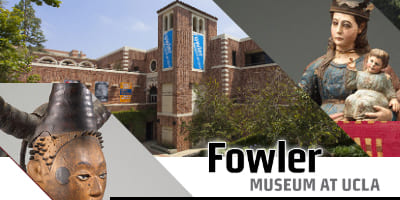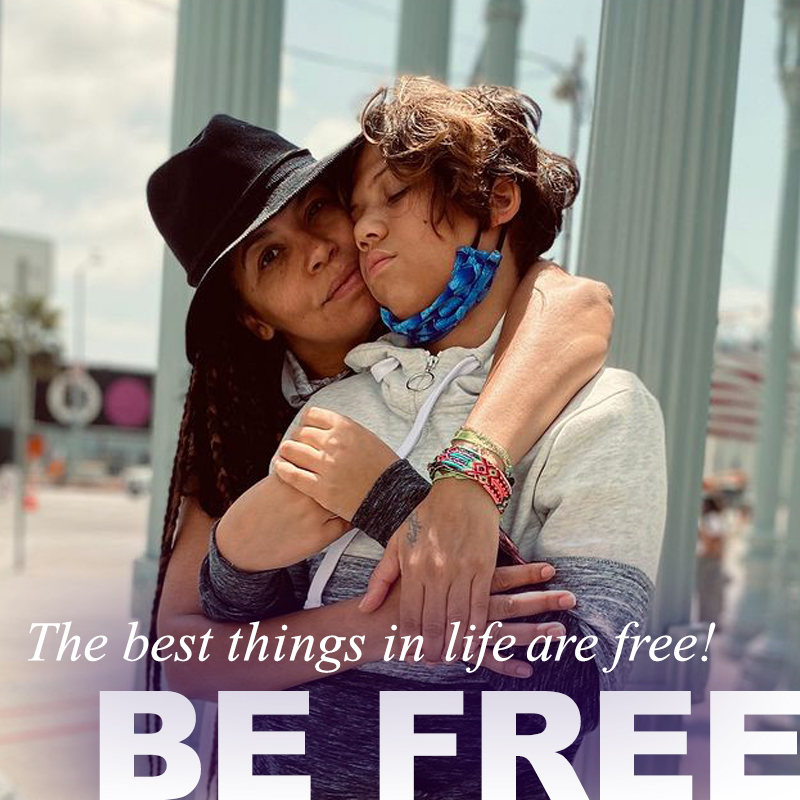NOW ON EXHIBIT- Westwood Village, UCLA
UCLA Fowler Museum presents

Visualizing Devotion: Jain Embroidered Shrine
November 20, 2022-April 16,2023
This exhibition highlights Jain devotional textiles (chhoda) from the Ronald and Maxine Linde Collection, promised gifts to the Fowler Museum. Eye-catching works of velvet and sateen cloth lavishly embroidered with gold and silver gilt thread, chhoda shine with visual references to Jain mythology, influential spiritual teachers, sacred sites, ritual traditions, and other crucial religious themes. In addition to objects from the Linde Collection which were acquired in the western Indian states of Gujarat, Rajasthan, and Maharashtra, the installation will include photographs documenting the use of chhoda in personal and public shrines by Jain adherents in Southern California.
308 Charles E. Young Dr N, Los Angeles, CA 90024
FREE EVERY DAY! @ UCLA
The Fowler Museum at UCLA explores global arts and cultures with an emphasis on works from Africa, Asia, the Pacific, and the Americas—past, and present. The Fowler enhances understanding and appreciation of the world’s diverse peoples, cultures, and religions through dynamic exhibitions, publications, and public programs, informed by interdisciplinary approaches and the perspectives of the cultures represented.
Also featured is the work of international contemporary artists presented within the complex frameworks of politics, culture, and social action.
Fowler Museum at UCLA provides exciting, informative, and thought-provoking exhibitions and events for the UCLA community and the people of greater Los Angeles and beyond.

Areas of the Collection
ARTS OF AFRICA AND THE AFRICAN DIASPORA

One of the largest and finest in the United States, and one of the top twenty African collections worldwide, this collection offers a superb representation of the arts of many African nations, including objects from Senegal, Nigeria, Ghana, Cameroon, the Democratic Republic of the Congo (formerly Zaire), Kenya, Zambia, and South Africa. The Yoruba collection alone is one of the three finest in the world. It contains a spectacular array of beaded objects, including a majestic throne, elaborate chiefly gowns and sophisticated divination regalia.
A collection of post-apartheid election materials and contemporary South African art is being developed, as are a number of collections of popular urban arts from countries including Tanzania and Muslim Senegal. Recently, more than 400 textiles made by the Kuba peoples of the Democratic Republic of the Congo were gifted by the Christensen Foundation.
The collection represents some of the finest examples of men’s embroidered raffia pile cloths and women’s appliqué cloths. This collection complements already significant holdings of West African textiles from countries such as Mali and Ghana, including kente and adinkra cloth and Asafo flags. The museum also has significant holdings of arts from the African Americas, and notable arts from Haitian Vodou, Brazil, and Suriname.
ARTS OF THE AMERICAS

These holdings include a comprehensive collection of pre-Columbian ceramics with the best representations from West Mexico, the Valley of Mexico, and pre-Columbian Peru (with special strengths in the art of the Moche). The Fowler also possesses a cohesive collection of Guatemalan costumes; an extensive collection of Mexican clothing; textiles of Peru; and a comprehensive representation of field-collected market materials from Michoacan, Mexico. Complementing the pre-Columbian collections are field collections of the Warao and Yecuana Indians of the Orinoco Delta of Venezuela and contemporary Latin American popular arts including Mexican trees of life, Day of the Dead figures, and masks from Metepec, Oaxaca, Michoacan, Jalisco, Puebla, and Guanajuato.
Native American materials from the U.S. and Canada are a small but significant part of the collection. Materials from the United States and Canada include well-known Northwest Coast material, as well as a notable cross section of late nineteenth-century Inuit art and material culture.
ARTS OF ASIA AND THE PACIFIC

The Fowler Museum at UCLA collections from Insular Southeast Asia, including Indonesia, the Philippines, Malaysia, and aboriginal Taiwan, are among the strongest in the United States. The Indonesian and Philippine textiles reinforce the Fowler Museum’s standing as a major repository for the textile arts. Also included are significant collections of sculptural material from Sumatra, Borneo, Sulawesi, and Luzon, puppetry from Java and Bali, basketry from Indonesia and the Philippines, and metalwork from the Philippines. The primary strength of the Pacific collections lies in materials from Papua New Guinea, especially the Papuan Gulf, Trobriand Islands, Sepik River, and Maprik region. Australia and Polynesia are also represented by sizeable collections, including 45 rare Maori cloaks.
The collections from mainland Asia are smaller but growing rapidly, due to current collecting priorities. A collection of betel-chewing paraphernalia, representing several countries in South and Southeast Asia, is considered one of the finest in the world. Other holdings include textiles from Bhutan, Pakistan, India, and Japan, baskets and decorative arts from Japan, puppetry from China, Thailand, India, and Turkey, and art and artifacts from Nepal.
ARCHAEOLOGICAL COLLECTIONS

The Fowler Museum at UCLA also serves as a repository for archaeological collections acquired during research conducted by UCLA faculty, staff, students, and other professional archaeologists. Documentation of the collections includes artifact catalogs, excavation notes, maps, and photographs. These collections serve primarily as an archive for teaching and research. The Museum is compliant with guidelines mandated by the Native American Graves Protection and Repatriation Act (NAGPRA) and has been signaled out by the State of California for its exemplary efforts.
Archaeological collection areas include:
California
Collections from approximately 1100 sites, mostly in Southern California.
Southwest
Significant collections from the Rainbow Bridge-Monument Valley Expedition of 1933-1938 and several Parowan Fremont sites in Utah were excavated in the 1950s, and other Anasazi and Hohokam sites.
Mexico
Includes objects from 218 sites, mostly in western and central Mexico.
Sudan
The Nubian/Egyptian fortress site at Askut is the source of approximately 60,000 artifacts excavated by UCLA archaeologist Alexander Badawy in conjunction with the Aswan High Dam Salvage Campaign, 1962-1964.
Old World stone tool collection
Includes tools from Europe and the Middle East.
MUSEUM HOURS
Admission is FREE
Monday – Tuesday: closed
Wednesday – Sunday: 12:00 pm – 5:00 pm
For additional information, visit the website @
fowler.ucla.edu
![]()
Find more









